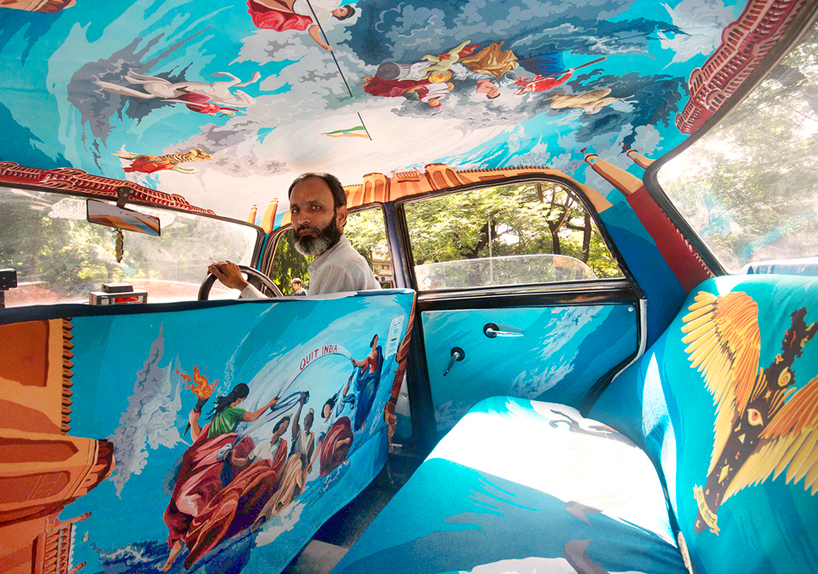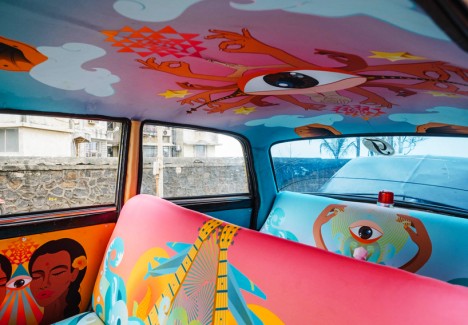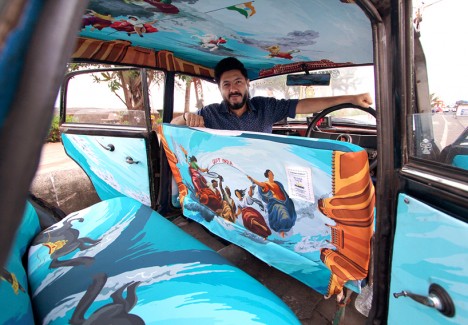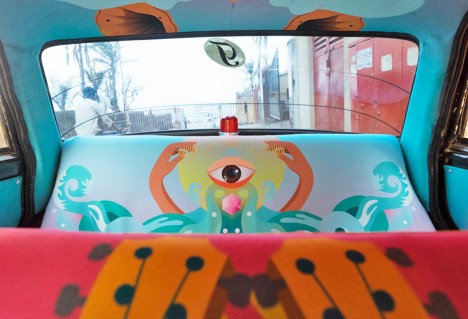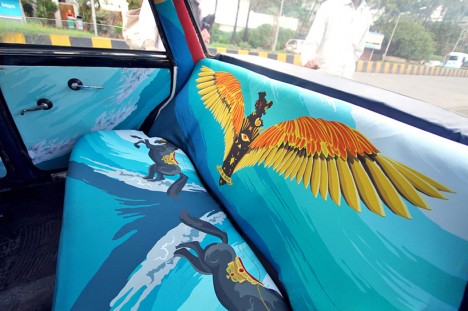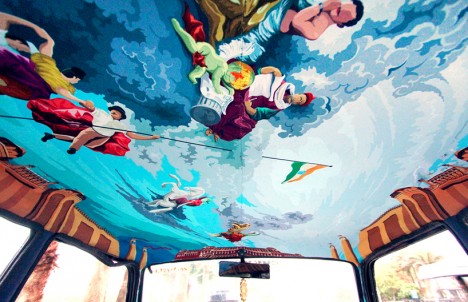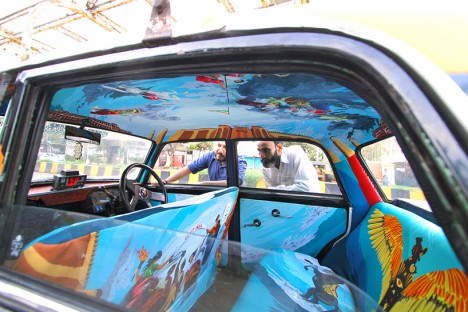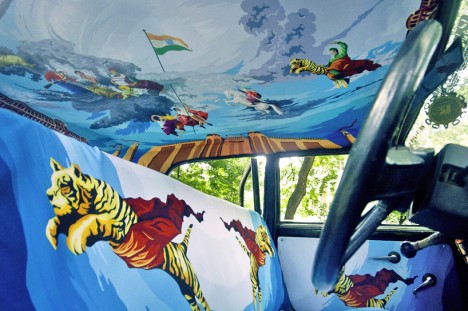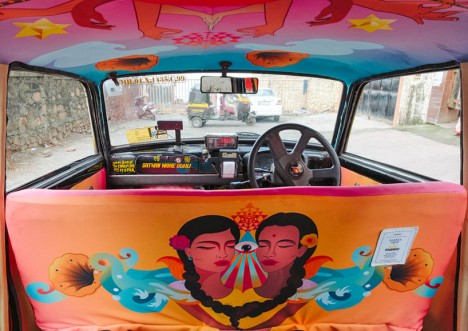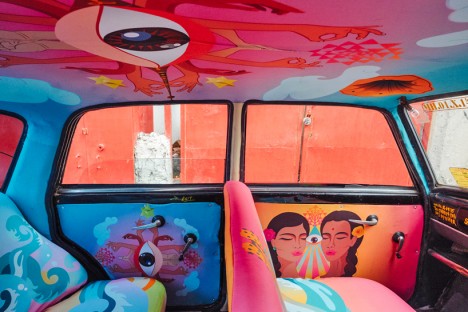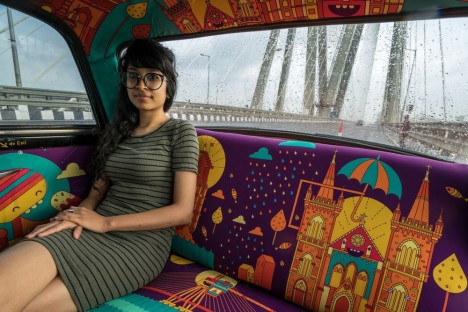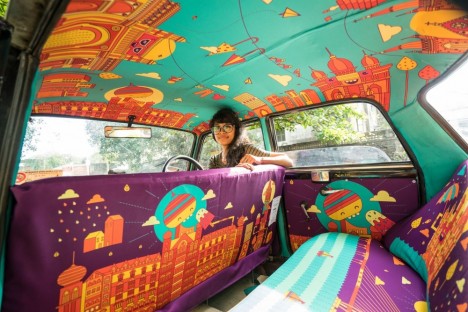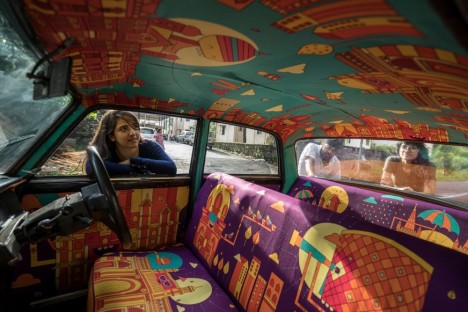Thousands of people get to gaze at beautiful original artwork while taking a ride from one place to another in Mumbai, India, bringing exposure to local design talent through a new form of urban art. The Taxi Fabric Project beautifies this often impersonal mode of transport, making cabs stand out as individuals in a crowded sea of cars and creating mobile galleries that immerse riders in a particular artist’s imagined world.
“Design – as a job or studied at school – is unfortunately not widely recognized in India,” say the creators of the project. “Older generations don’t understand it. Design to them just performs a function. Many people don’t know that design can create a real impact. With so few spaces for young people to show off their skills, it’s hard to change that perception.”
In a city where cabs are the most convenient and common way to get around, this unusual mashup of art and transportation has the potential to get a lot of people excited about design and curious about the artists. Up to 30 taxis will be made over for the project, printing colorful works onto fabric and stitching it directly to the interior surfaces of each car.
One notable example is ‘A Century of Revolt’ by Kunel Gaur, which illustrates the Indian Independence in a fresco-inspired style. Another – ‘Monad’ by Samia Arif – reminds Indians how similar their culture is to that of neighboring Pakistan, while conflicts continue to rage between the two countries.
‘Happily Ever After’ by Shaivalini Kumar celebrates the landmarks of Mumbai. “The architecture of Mumbai blends Gothic, Victorian, Art Deco, Indo-Saracenic and contemporary architectural styles. Many buildings, structures and historical monuments remain from the colonial era. All these buildings coexist beautifully and are also as resilient as the amazing people of Mumbai.”
